Today I disassembled a power strip (power extension) and found a LED connected directly to AC with a normal resistor (not a power resistor). How is it working as I thought it would be burned in no time? The resistor value is 220k.
-
3Are you sure it's an LED and not a neon? – Roger Rowland Apr 09 '16 at 09:30
-
11Maths. It's important. 220kOhm, even directly across 230VAC without LED or Neon lets only slightly over 1mA flow, and dissipates P = v^2 / R = (230*230)/220000 = 0.24W – Asmyldof Apr 09 '16 at 11:21
-
21You should smash that power strip to bits and put it in the trash. The mains power connections are made with solder joints that are not mechanically secure. If it is ever overloaded, it will fail in spectacular ways. There's no way that this design has passed any sort of safety certification. It just isn't worth the risk. – Dave Tweed Apr 09 '16 at 13:57
-
2@DaveTweed looks like the earth pins aren't connected either. – ratchet freak Apr 09 '16 at 19:15
-
2@DaveTweed im aware of the poor design and quality of the product thats why i opened the box found this LED, i will not be using this in future – mohammed ashker Apr 09 '16 at 19:54
-
1@ratchetfreak: Yeah, I was hoping (probably in vain) that there was a hidden connection for those. – Dave Tweed Apr 09 '16 at 20:52
-
1I could solder better than that in 4th grade. – tcrosley Apr 12 '16 at 01:17
-
Is the brown wire actually soldered? It looks like it's just pushed against the copper. – Oskar Skog May 26 '17 at 16:10
-
@RogerRowland Neons dont use epoxy cases.. Power Strips must have breakers, no drama with a short. No reverse protection for GaAsP/GaP LED also no Gnd connection, but OK for 2 pronged plugs and 3 pronged plugs with EMI generated but no safety gnd. so laptop charger ok but on wet grass may be a risk , wet feet to leakage current. I do not see a resistance fault on any solder joints. – Tony Stewart EE75 May 26 '17 at 16:11
-
The creepage breakdown on a new resistor with a body length of 0.1" or 2.5mm is 2.5kV (new) but rated for much less (200V) with dust and high %RH. It will just fuse open and short LED without MOV's. I take it you got really cheap, so no loss of $ – Tony Stewart EE75 May 26 '17 at 16:22
-
Sure looks like a 120V power bar to me with those sockets. @mohammedashker why didn't you specify Vac? Did you ohm out the ground pins for topside connection? I assumed you were competent to do so. – Tony Stewart EE75 May 26 '17 at 16:29
3 Answers
Use Ohm's law:
$$ {220\:\mathrm{V} \over 220\:\mathrm{k\Omega} } = 0.001\:\mathrm{A} = 1\:\mathrm{mA} $$
And power is the product of voltage and current, so:
$$ 0.001\:\mathrm{A} \cdot 220\:\mathrm{V} = 0.22\:\mathrm{W} $$
A 1/2 W resistor could connect across 220V just fine without burning up.
The LED is also a diode, and lets current flow only in one direction. So half the time there's no current at all, so the power is actually half this.
And if you are in a 120V country, the power is even less.
That explains why it doesn't immediately burst into flames, at least. However as others have mentioned, this plug strip has a number of other problems which might will result in other dangerous failures.
- 56,804
- 17
- 141
- 262
-
1Re: "without burning up". Provided the resistor is rated for such a voltage drop over it, sqrt(2)*220 V ~ 350 V. – Peter Mortensen Apr 09 '16 at 19:28
The resistor power dissipation is safe as Phil Frost stated. However through my 54 year old eyes it looks like a SFR16 resistor that has a Voltage rating of 200V. I would always put 2 resistors in series when using SFR16. The actual resistor in the photo could be some generic or copy or ripoff so the voltage rating could be bad. If the LED is just a standard one things will be dim. A high efficiency or super bright one will provide a credible indication. What I always did was use a bridge rectifier made from 4 1N4148s. This stopped flicker and increased apparent brightness due to the doubling of average current. The poor LED in your powerbox is getting negative mains pulses albeit current limited across it half the time. Is the LED a special back to back LED or does it have an integrated reverse protection diode across it? If not you have an unreliable product.
- 8,858
- 4
- 26
- 41
- 14,235
- 2
- 27
- 65
-
The peak voltage is nominally 311 V. Shouldn't the rating be more like 400 V? – Peter Mortensen Apr 09 '16 at 19:31
-
@PeterMortensen Given the shoddy overall construction of this power strip, I wouldn't be surprised at all if they'd used the wrong kind of resistor too. – Apr 09 '16 at 23:01
The problem here is when LED is in reverse voltage mode. Reverse voltage can go beyond LED's specs and burn it.
- 19
- 3
